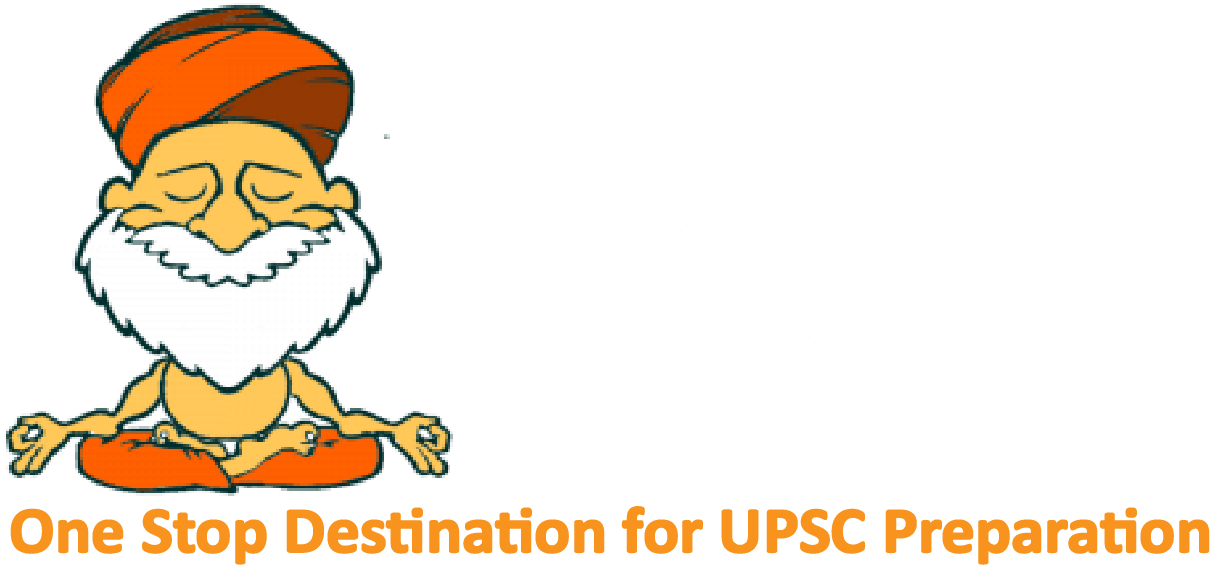- Home
- UPSC Mains
- Daily Free Initiatives
- Courses
- KPSC / KAS
- हिंदी
- Centres
- Contact Us



For Previous Daily Quiz (ARCHIVES) – CLICK HERE
The Current Affairs questions are based on sources like ‘The Hindu’, ‘Indian Express’ and ‘PIB’, which are very important sources for UPSC Prelims Exam. The questions are focused on both the concepts and facts. The topics covered here are generally different from what is being covered under ‘Daily Current Affairs/Daily News Analysis (DNA) and Daily Static Quiz’ to avoid duplication. The questions would be published from Monday to Saturday before 2 PM. One should not spend more than 10 minutes on this initiative.
Gear up and Make the Best Use of this initiative.
Do remember that, “the difference between Ordinary and EXTRA-Ordinary is PRACTICE!!”
0 of 5 questions completed
Questions:
To view Solutions, follow these instructions:
You have already completed the test before. Hence you can not start it again.
Test is loading...
You must sign in or sign up to start the test.
You have to finish following test, to start this test:
0 of 5 questions answered correctly
Your time:
Time has elapsed
You have scored 0 points out of 0 points, (0)
| Average score |
|
| Your score |
|
| Pos. | Name | Entered on | Points | Result |
|---|---|---|---|---|
| Table is loading | ||||
| No data available | ||||
Consider the following statements regarding World Trade Organisation(WTO)
Select the correct statement/s:
Solution (b)
Statement Analysis:
| Statement 1 | Statement 2 | Statement 3 |
| Correct | Correct | Incorrect |
| The World Trade Organization (WTO) is an intergovernmental organization that regulates and facilitates international trade. Governments use the organization to establish, revise, and enforce the rules that govern international trade. It officially commenced operations on 1 January 1995, pursuant to the 1994 Marrakesh Agreement, thus replacing the General Agreement on Tariffs and Trade (GATT) that had been established in 1948. The WTO is the world’s largest international economic organization, with 164 member states representing over 98% of global trade and global GDP | According to WTO norms, countries are not allowed to export foodgrains from their public stockholding because those are procured at subsidised rates. | The WTO is ‘member-driven’, with decisions taken by consensus among all member governments. Not by any majority. |
Context: Finance Minister has asked WTO to allow India to export food grains from public stock holdings.
Solution (b)
Statement Analysis:
| Statement 1 | Statement 2 | Statement 3 |
| Correct | Correct | Incorrect |
| The World Trade Organization (WTO) is an intergovernmental organization that regulates and facilitates international trade. Governments use the organization to establish, revise, and enforce the rules that govern international trade. It officially commenced operations on 1 January 1995, pursuant to the 1994 Marrakesh Agreement, thus replacing the General Agreement on Tariffs and Trade (GATT) that had been established in 1948. The WTO is the world’s largest international economic organization, with 164 member states representing over 98% of global trade and global GDP | According to WTO norms, countries are not allowed to export foodgrains from their public stockholding because those are procured at subsidised rates. | The WTO is ‘member-driven’, with decisions taken by consensus among all member governments. Not by any majority. |
Context: Finance Minister has asked WTO to allow India to export food grains from public stock holdings.
Consider the following statements about ‘Project -75(I)’
Select the correct statement/s:
Solution (b)
Statement Analysis:
| Statement 1 | Statement 2 |
| Incorrect | Correct |
| (P-75I) are a planned class of diesel-electric submarines, which are to be built for the Indian Navy. | P-75I project will be India’s first project under the Strategic Partnership Model.
Under this model, the government will give the contract to an Indian Strategic Partner (SP), which will partner with a foreign Original Equipment Manufacturer (OEM) to build Air-independent propulsion (AIP)-powered submarines in India. |
Context: Defence Minister once again extended decline to submit responses to the request for proposal for 6 submarines under P-75(I)
Solution (b)
Statement Analysis:
| Statement 1 | Statement 2 |
| Incorrect | Correct |
| (P-75I) are a planned class of diesel-electric submarines, which are to be built for the Indian Navy. | P-75I project will be India’s first project under the Strategic Partnership Model.
Under this model, the government will give the contract to an Indian Strategic Partner (SP), which will partner with a foreign Original Equipment Manufacturer (OEM) to build Air-independent propulsion (AIP)-powered submarines in India. |
Context: Defence Minister once again extended decline to submit responses to the request for proposal for 6 submarines under P-75(I)
‘Namsai Declaration’ signed recently is related to
Solution(c)
Assam and Arunachal Pradesh signed an agreement (Namsai Declaration) to end border issues between the two states and decided to “restrict” the number of disputed villages to 86 instead of 123. Chief Ministers of the two North-eastern neighbours met at Namsai in Arunachal Pradesh and signed the agreement.
Context – Assam and Arunachal signed a pact to resolve border dispute
Solution(c)
Assam and Arunachal Pradesh signed an agreement (Namsai Declaration) to end border issues between the two states and decided to “restrict” the number of disputed villages to 86 instead of 123. Chief Ministers of the two North-eastern neighbours met at Namsai in Arunachal Pradesh and signed the agreement.
Context – Assam and Arunachal signed a pact to resolve border dispute
With reference to ‘Registrar General of India’, consider the following statements
Select the correct statement(s)
Solution(a)
Statement Analysis:
| Statement 1 | Statement 2 |
| Correct | Incorrect |
| Registrar General and Census Commissioner of India, founded in 1961 by Government of India Ministry of Home Affairs, for arranging, conducting and analysing the results of the demographic surveys of India including Census of India and Linguistic Survey of India. | The office of the Registrar General of India comes under the Ministry of Home Affairs. |
Context – The organization was in news recently.
Solution(a)
Statement Analysis:
| Statement 1 | Statement 2 |
| Correct | Incorrect |
| Registrar General and Census Commissioner of India, founded in 1961 by Government of India Ministry of Home Affairs, for arranging, conducting and analysing the results of the demographic surveys of India including Census of India and Linguistic Survey of India. | The office of the Registrar General of India comes under the Ministry of Home Affairs. |
Context – The organization was in news recently.
Consider the following statements with respect to ‘Rebate of State and Central Levies and Taxes (RoSCTL) Scheme’
Choose the correct answer using the code given below
Solution(d)
Statement Analysis:
| Statement 1 | Statement 2 | Statement 3 |
| Correct | Incorrect | Incorrect |
| In 2019, the Ministry of Textiles notified a new scheme by the name Rebate of State and Central Taxes and Levies (RoSCTL). Under this scheme, the exporters are issued a Duty Credit Scrip for the value of embedded taxes and levies contained in the exported product. Exporters can use this scrip to pay basic Customs duty for the import of equipment, machinery or any other input. | The scheme was notified by Ministry of Textiles in 2019. | At present, the RoSCTL scheme is applicable only to the exporters of apparel and made-ups. Continuation of RoSCTL for Apparel/Garments and Made-ups is expected to make these products globally competitive by rebating all embedded taxes/levies which are currently not being rebated under any other mechanism. |
Context – Centre extends RoSCTL (Rebate of State and Central Taxes and Levies) scheme till March 31, 2024 for export of apparel/garments and made-ups.
Solution(d)
Statement Analysis:
| Statement 1 | Statement 2 | Statement 3 |
| Correct | Incorrect | Incorrect |
| In 2019, the Ministry of Textiles notified a new scheme by the name Rebate of State and Central Taxes and Levies (RoSCTL). Under this scheme, the exporters are issued a Duty Credit Scrip for the value of embedded taxes and levies contained in the exported product. Exporters can use this scrip to pay basic Customs duty for the import of equipment, machinery or any other input. | The scheme was notified by Ministry of Textiles in 2019. | At present, the RoSCTL scheme is applicable only to the exporters of apparel and made-ups. Continuation of RoSCTL for Apparel/Garments and Made-ups is expected to make these products globally competitive by rebating all embedded taxes/levies which are currently not being rebated under any other mechanism. |
Context – Centre extends RoSCTL (Rebate of State and Central Taxes and Levies) scheme till March 31, 2024 for export of apparel/garments and made-ups.
